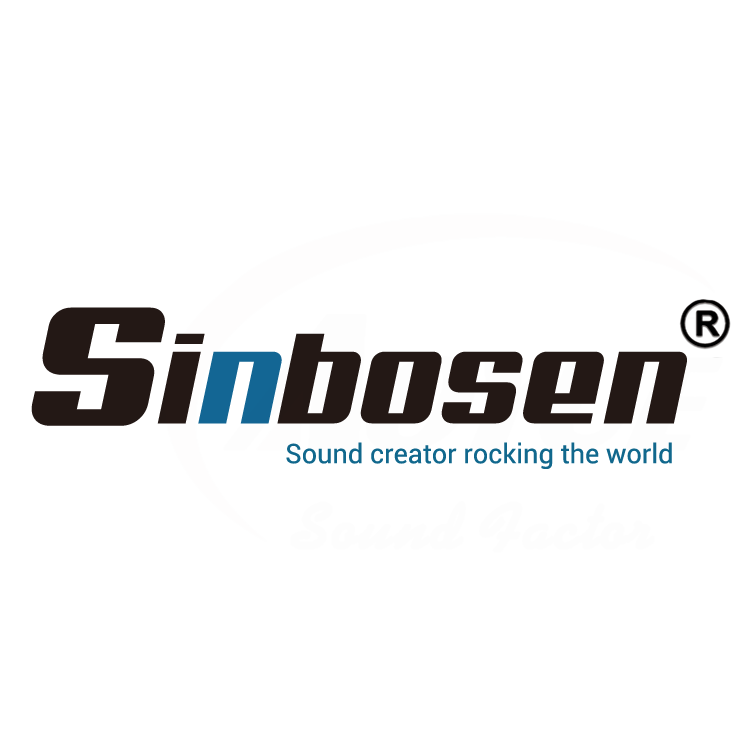What is an amplifier? Is there really a difference between Class A and Class B?
Views : 11588
Update time : 2022-06-27 15:26:01
Amplifier is a wonderful thing that is often heard in life and knows it is related to audio, but what it is used for is a little unexplainable. Before we bring it to today's topic, let's briefly introduce what an amplifier is.

▲ The power amplifier is to make the sound louder. I understand the reason.
The function of the amplifier is to amplify the audio signal sent by the source, and the source refers to the mp3 file played by the mobile phone, or the signal output by the microphone and musical instrument. Because the strength of the source itself is too weak, there is no way to directly push the single unit of the speaker to make it sound. At this time, it needs the help of the power amplifier.
A.Preamp The job of the pre-stage is to strengthen the voltage of the signal, and increase the signal of the mic level and inst level to the line level in order to drive the load of the post-stage. The volume adjustment, gain and tone adjustment are all done in the pre-stage.
B.Poweramp The post-stage is to increase the over-voltage signal of the pre-stage, and then amplify its current to become the speaker level, so that the enhanced signal has enough power to drive the loudspeaker with higher load.

▲The process of power amplifier operation. Although the function of the power amplifier is to enhance the signal, the expanded circuit design will also affect the restoration and efficiency of the tone. Among different types of expansion methods, the most commonly discussed are 1.Linearity 2.Efficiency.
A.Linearity
When amplifying a signal, it is inevitable that the original waveform will be changed, so it is a very important consideration to reduce the degree of distortion as much as possible when designing the amplifying circuit.

B.Efficiency
However, in the pursuit of high-reduction amplification, the efficiency of energy use is usually poor. In short, it is power consumption. Other energy that has not been converted successfully will be converted into heat energy and dissipated. Therefore, the temperature of the fuselage will also be affected by the conversion efficiency. Affect the life of parts.

▲ The power amplifier is to make the sound louder. I understand the reason.
The function of the amplifier is to amplify the audio signal sent by the source, and the source refers to the mp3 file played by the mobile phone, or the signal output by the microphone and musical instrument. Because the strength of the source itself is too weak, there is no way to directly push the single unit of the speaker to make it sound. At this time, it needs the help of the power amplifier.
Part 1:The structure of the power amplifier
It can be divided into 1. Pre-stage power amplifier and 2. Post-stage power amplifier. There will also be integrated power amplifiers that use the same set of pre-stage and post-stage, but the principle of operation is exactly the same.A.Preamp The job of the pre-stage is to strengthen the voltage of the signal, and increase the signal of the mic level and inst level to the line level in order to drive the load of the post-stage. The volume adjustment, gain and tone adjustment are all done in the pre-stage.
B.Poweramp The post-stage is to increase the over-voltage signal of the pre-stage, and then amplify its current to become the speaker level, so that the enhanced signal has enough power to drive the loudspeaker with higher load.

▲The process of power amplifier operation. Although the function of the power amplifier is to enhance the signal, the expanded circuit design will also affect the restoration and efficiency of the tone. Among different types of expansion methods, the most commonly discussed are 1.Linearity 2.Efficiency.
A.Linearity
When amplifying a signal, it is inevitable that the original waveform will be changed, so it is a very important consideration to reduce the degree of distortion as much as possible when designing the amplifying circuit.

B.Efficiency
However, in the pursuit of high-reduction amplification, the efficiency of energy use is usually poor. In short, it is power consumption. Other energy that has not been converted successfully will be converted into heat energy and dissipated. Therefore, the temperature of the fuselage will also be affected by the conversion efficiency. Affect the life of parts.
Part 2:Different types of power amplifiers, and also use linearity and efficiency as the main comparison.
Type 1:Class A amplifier
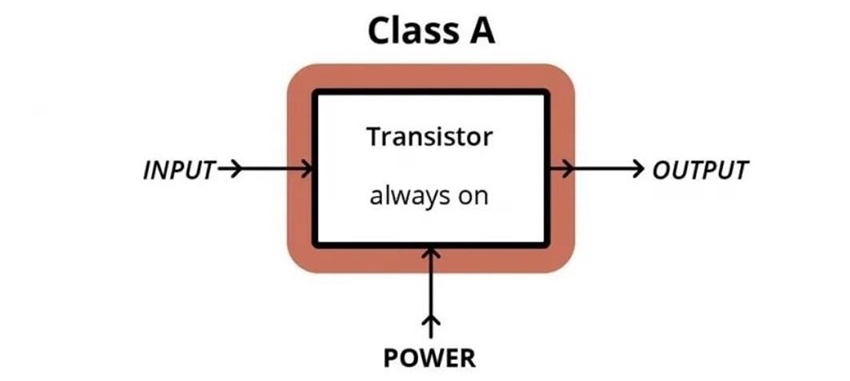
Class A amplification is an amplification method with a high degree of sound reproduction, and at the same time, the efficiency is also very low.
During the signal input period, it is in the ON state (including positive and negative cycles), so even when there is no signal input, the power amplifier continues to consume power, so class A has better linearity without generating B Class, class AB interaction distortion (CrossoverDistortion) problem.
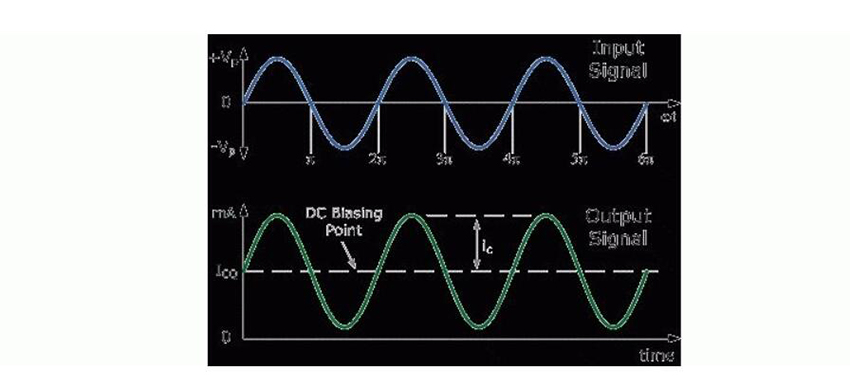
▲Class A amplification can amplify the input signal (blue) while achieving the minimum distortion output signal (green)
Although class A can provide lower distortion sound, its efficiency is only between 15%-30%, most of the power is lost as temperature, so the body temperature is very hot, and the machine is only It can be made very large and heavy, and the amplifying components (transistors or vacuum tubes) often need to be replaced in the environment of high temperature and high current.
Due to the very low distortion of Class A amplified sound, there are still many audiophiles willing to spend a lot of money for a sound with almost no distortion, even if there are many shortcomings.
Linearity: ★★★★★
Efficiency: ★
Type 2:Class B amplifier

Class B amplifier-Also because the A-type expansion is really inefficient, the B-type expansion adopts a different design method. There are two output amplifiers to process the positive wave and the negative wave of the audio signal, and then the output is integrated by the crystal, and the one that handles the positive wave is working. , the one responsible for the negative wave stops, and vice versa. Therefore, class B amplification can have a conversion efficiency close to 80%.
However, a major problem with Class B amplification is that when the two output amplifiers are turned on and off, the linear discontinuity at the intersection of the positive and negative waves is caused, which is the aforementioned crossover distortion, which makes the sound more rough.
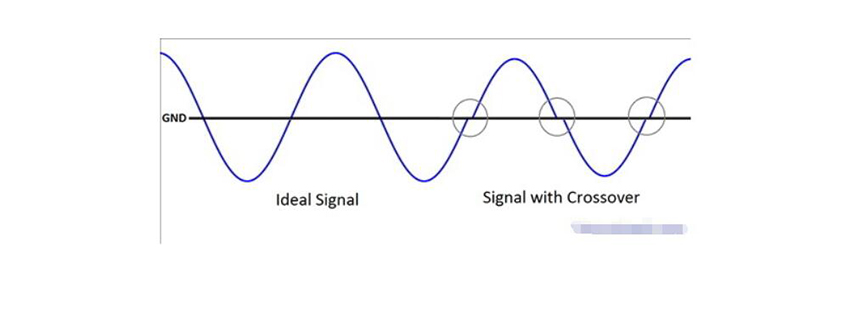
▲The way of B-type expansion will have more serious crossover distortion, and there are discontinuous faults at the positive and negative intersections.
The design of Class B makes his sound destined to be distorted, and it is mostly used in products such as FM radios or bedside speakers that do not require timbre.
Linearity: ★★
Efficiency: ★★★★
Type 3:Class AB amplifier-Like Sinbosen FP amplifier

Like the class B amplifier, the class AB amplifier also has two output amplifiers to deal with the positive wave and the negative wave respectively. The difference is that the conduction time of the output amplifier is longer than the half cycle of the class B. When it is large, the B-type amplification method is used, so it can have better linearity and make the degree of crossover distortion (CrossoverDistortion) smaller than that of B-type.
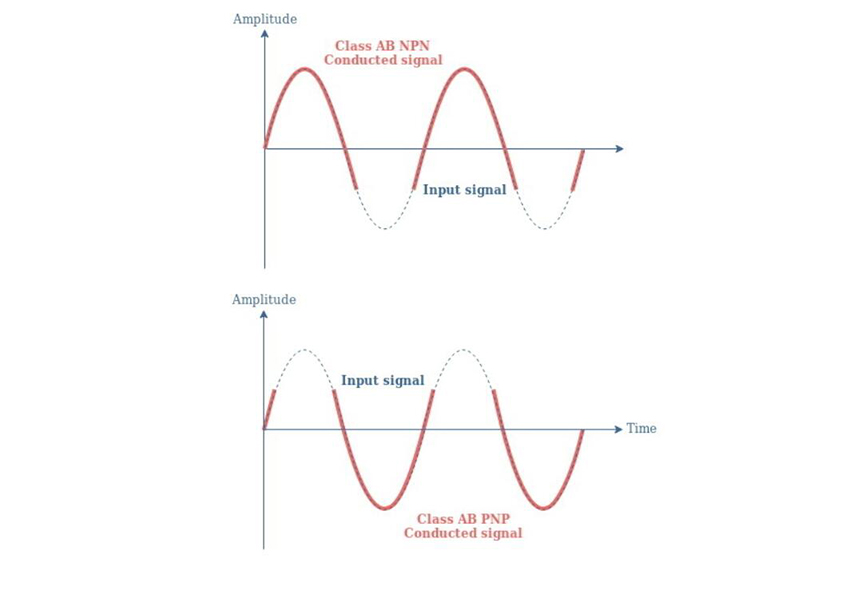
▲Class AB expansion has smaller crossover distortion and better linearity than class B
Compared with class A and class B, class AB amplification solves the serious energy loss of class A, and the degree of distortion is much better than that of class B, but the linearity performance is slightly worse than that of class A, and the efficiency is also lower than that of class B (efficiency). About 50%~70%), it is a design between A and B, as the name suggests.
Class AB amplifiers are commonly used in home theater and musical instrument amps, and many excellent electric guitar amps such as the Fender Twin Reverb and Vox's AC-30 use class AB amplification.
Linearity: ★★★★
Efficiency: ★★★
Type 4:Class D amplifier-like Sinbosen digital amplifier
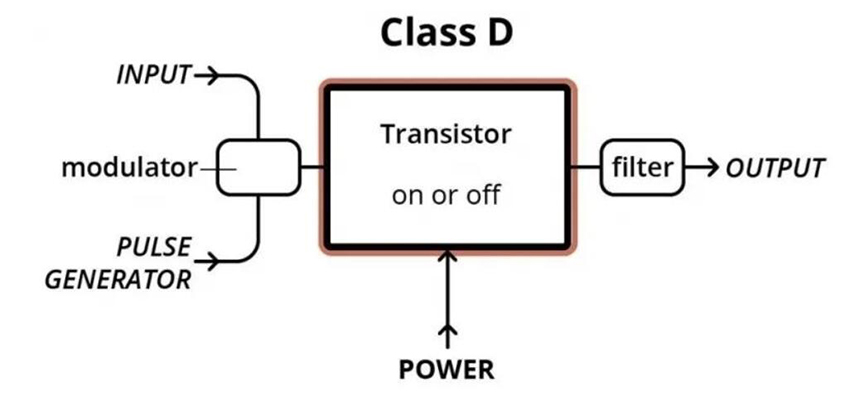
The operation principle of class D power amplifier is more special. It uses the analog waveform signal and the high-frequency triangular waveform of the switching power supply to quickly turn on and off the voltage to compare the voltage. Through the intersection of the two waveforms, the pulse wave represented by width and width can be obtained. Signal Pulse Width Modulation (PWM), which is a kind of digital sampling. The high-amplitude output is filtered out by a low-pass filter to filter out the high frequency of the triangular wave and converted back to an analog signal that can drive the speaker unit.

▲Sampling the intersection of the triangular wave (red) and the source waveform (blue), and converts it into a rectangular pulse signal with different widths.
The advantage of Class D is that it has very high efficiency (about 90%). High efficiency also means that there will not be too much heat dissipation requirements, and the body can be made lighter. Although the early Class D sound performance was poor, technological progress has also made his tone better and better.
Class D power amplifiers are often used in portable products such as headphone amplifiers and floor-type speaker heads.
Linearity: none
Efficiency: ★★★★★
One is usually not the best. The pursuit of a high-reduction amplification method is very expensive, and it takes up a lot of space and is very hot. The amplification method that pursues economical and high efficiency will have obvious linear distortion, so some trade-offs must be made. I also hope that after reading this article, you can find the most suitable type of amplifier according to your needs.
▲Relate News:How to choose suitable amplifier for your professional speaker?
▲Contact information:Whatsapp:https://api.whatsapp.com/send?l=en&phnoe=8616676738225

Class A amplification is an amplification method with a high degree of sound reproduction, and at the same time, the efficiency is also very low.
During the signal input period, it is in the ON state (including positive and negative cycles), so even when there is no signal input, the power amplifier continues to consume power, so class A has better linearity without generating B Class, class AB interaction distortion (CrossoverDistortion) problem.

▲Class A amplification can amplify the input signal (blue) while achieving the minimum distortion output signal (green)
Although class A can provide lower distortion sound, its efficiency is only between 15%-30%, most of the power is lost as temperature, so the body temperature is very hot, and the machine is only It can be made very large and heavy, and the amplifying components (transistors or vacuum tubes) often need to be replaced in the environment of high temperature and high current.
Due to the very low distortion of Class A amplified sound, there are still many audiophiles willing to spend a lot of money for a sound with almost no distortion, even if there are many shortcomings.
Linearity: ★★★★★
Efficiency: ★
Type 2:Class B amplifier

Class B amplifier-Also because the A-type expansion is really inefficient, the B-type expansion adopts a different design method. There are two output amplifiers to process the positive wave and the negative wave of the audio signal, and then the output is integrated by the crystal, and the one that handles the positive wave is working. , the one responsible for the negative wave stops, and vice versa. Therefore, class B amplification can have a conversion efficiency close to 80%.
However, a major problem with Class B amplification is that when the two output amplifiers are turned on and off, the linear discontinuity at the intersection of the positive and negative waves is caused, which is the aforementioned crossover distortion, which makes the sound more rough.

▲The way of B-type expansion will have more serious crossover distortion, and there are discontinuous faults at the positive and negative intersections.
The design of Class B makes his sound destined to be distorted, and it is mostly used in products such as FM radios or bedside speakers that do not require timbre.
Linearity: ★★
Efficiency: ★★★★
Type 3:Class AB amplifier-Like Sinbosen FP amplifier

Like the class B amplifier, the class AB amplifier also has two output amplifiers to deal with the positive wave and the negative wave respectively. The difference is that the conduction time of the output amplifier is longer than the half cycle of the class B. When it is large, the B-type amplification method is used, so it can have better linearity and make the degree of crossover distortion (CrossoverDistortion) smaller than that of B-type.

▲Class AB expansion has smaller crossover distortion and better linearity than class B
Compared with class A and class B, class AB amplification solves the serious energy loss of class A, and the degree of distortion is much better than that of class B, but the linearity performance is slightly worse than that of class A, and the efficiency is also lower than that of class B (efficiency). About 50%~70%), it is a design between A and B, as the name suggests.
Class AB amplifiers are commonly used in home theater and musical instrument amps, and many excellent electric guitar amps such as the Fender Twin Reverb and Vox's AC-30 use class AB amplification.
Linearity: ★★★★
Efficiency: ★★★
Type 4:Class D amplifier-like Sinbosen digital amplifier

The operation principle of class D power amplifier is more special. It uses the analog waveform signal and the high-frequency triangular waveform of the switching power supply to quickly turn on and off the voltage to compare the voltage. Through the intersection of the two waveforms, the pulse wave represented by width and width can be obtained. Signal Pulse Width Modulation (PWM), which is a kind of digital sampling. The high-amplitude output is filtered out by a low-pass filter to filter out the high frequency of the triangular wave and converted back to an analog signal that can drive the speaker unit.

▲Sampling the intersection of the triangular wave (red) and the source waveform (blue), and converts it into a rectangular pulse signal with different widths.
The advantage of Class D is that it has very high efficiency (about 90%). High efficiency also means that there will not be too much heat dissipation requirements, and the body can be made lighter. Although the early Class D sound performance was poor, technological progress has also made his tone better and better.
Class D power amplifiers are often used in portable products such as headphone amplifiers and floor-type speaker heads.
Linearity: none
Efficiency: ★★★★★
One is usually not the best. The pursuit of a high-reduction amplification method is very expensive, and it takes up a lot of space and is very hot. The amplification method that pursues economical and high efficiency will have obvious linear distortion, so some trade-offs must be made. I also hope that after reading this article, you can find the most suitable type of amplifier according to your needs.
▲Relate News:How to choose suitable amplifier for your professional speaker?
▲Contact information:Whatsapp:https://api.whatsapp.com/send?l=en&phnoe=8616676738225
